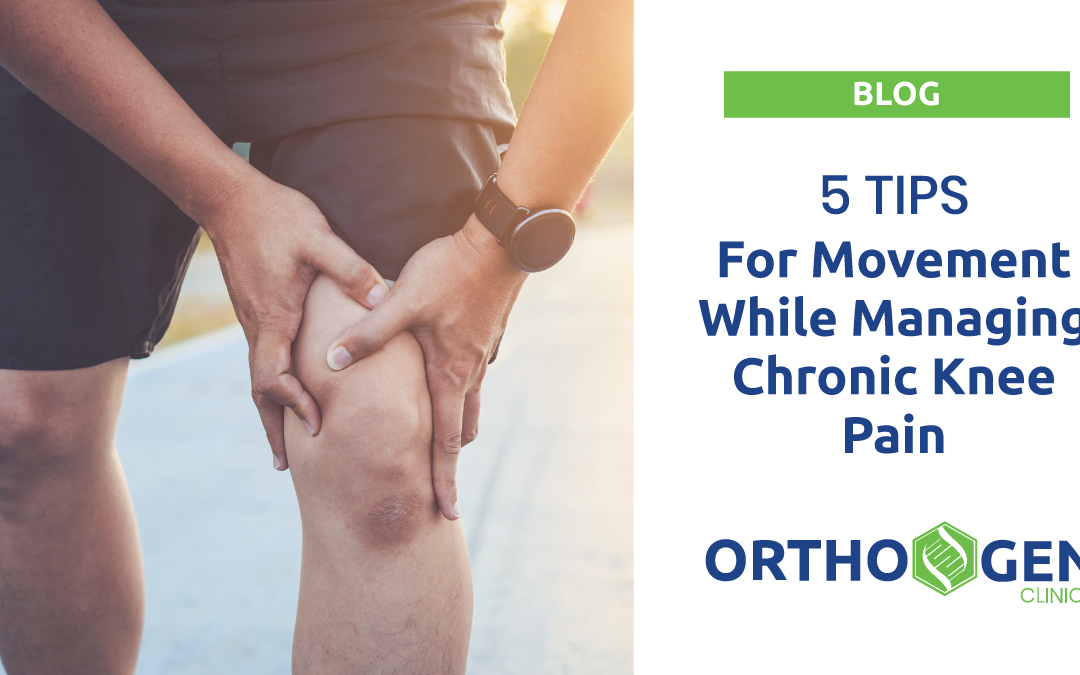A new year always inspires increased activity as we work toward our wellness goals, but chronic knee pain and new injuries can derail fitness efforts and lead us back toward the sedentary habits we aim to leave behind. Fortunately, advances in regenerative medicine and the sciences of mindful movement can help keep our bodies in motion, as long as we follow some supportive guidelines. When it comes to working out properly while managing chronic knee pain, which exercise tips can support long-term health goals and help with pain relief?
1. Assess Aches
Although seasonal excitement may inspire jumping into a new exercise regimen, the common disclaimer about “consulting your physician first” is in place for a reason. If knee pain is already in your experience, it’s essential to seek the support of a medical team like OrthoGen Clinics, the leader in regenerative therapies, that can effectively relieve any current, chronic conditions, and assess future injury risk. Establishing a physical baseline can also help differentiate routine soreness after a workout from a new ache worth checking out.
2. Start Slowly
Nothing is more frustrating or discouraging to motivated movers than a fresh injury. When adding workouts to your daily routine, a great exercise tip to follow is the 10% rule, which recommends increasing your exercise activities by just 10% weekly to gradually and safely adapt. Also, it’s important to have at least one day off every week to allow the body to rest and recover and to avoid overtraining, which will erase your gains, tax your immune system, and could lead to injury.
3. Welcome Warm Ups
Every time you work out, it’s important to warm up your muscles and joints to prevent a worsening of pain and the risk of soft tissue injuries. Simple stretches performed on your back or seated will help you prepare for movement by releasing tight muscles around joints, and serve to stimulate the lubrication process for more cushioned, fluid mechanics. Millions of otherwise healthy people visit the ER annually because of sports related injuries, and regular warm ups can help keep you from becoming one of them.
4. Move Mindfully
In some cases, chronic pain can be worsened if increased activity is performed without enough attention to alignment and balance. Pain on one side of the body can lead to changes in posture, body movement, and even gait, which can cause more musculoskeletal pain and joint wear through compensation. Whether your workouts involve gentle or active aerobics or resistance training, it can be helpful to enlist the support of a pro that can teach you how to move your body with correct alignment and appropriate awareness.
5. Vary Exercises
While exercise is a great idea for improving strength and reducing chronic knee pain, it’s important to remember that joints are complex, and rely on a number of muscles that move in a variety of ways for optimum function and support. Cross-training with a diverse range of exercises is an excellent option to ensure that all muscles are developed evenly and functionally.
OrthoGen Clinics is in Your Corner
Moving more can be a challenge if you’re experiencing a chronic knee pain condition that limits your comfort and confidence, and OrthoGen offers a variety of regenerative therapies to help naturally heal your lingering injuries for rapid pain relief. Our comprehensive treatment protocols are a real alternative to invasive and expensive surgeries with long recovery times, and we invite you to schedule a consultation today to learn more about how they can work for you!

